Irish soda bread scones, whether they be traditional Irish or Scottish, (also referred to as white bannocks) aren’t just for St Patrick’s Day! After you try this recipe, soda scones may become a favorite in your household quite quickly!

I may ruffle some red hair here, but did you know that Saint Patrick was born in Scotland?
As an Amazon Associate I earn from qualifying purchases.
Do your own google search if you don’t believe me, but it’s true. I’ll give you a minute. See, I told you!
And if that’s not news to you, did you also know that he was Roman? Just like me–born in Scotland to Roman parents! How cool is that? Now that you’ve learned something new, let’s get to the Irish soda bread scones.

I’m going to show you how to make a quick and easy recipe for soda scones to celebrate the day of the patron saint of Ireland. Both the Irish and Scots make these versatile scones, farls, or white bannocks.
Once you try them, I bet you just won’t be making them once a year!
Looking for an Irish cake or dessert recipe? Try my delectable Irish whiskey cake!

How to Serve Irish Soda Bread Scones (or Scottish Bannocks)
Irish soda bread scones, or white bannocks, can be split in half and fried for breakfast. Or they can be served as a traditional afternoon tea scone, with jam and cream, or toasted and spread with some good quality salted butter (I like Kerrygold, and it’s Irish) for a wonderful snack.
Find more Irish recipes here!
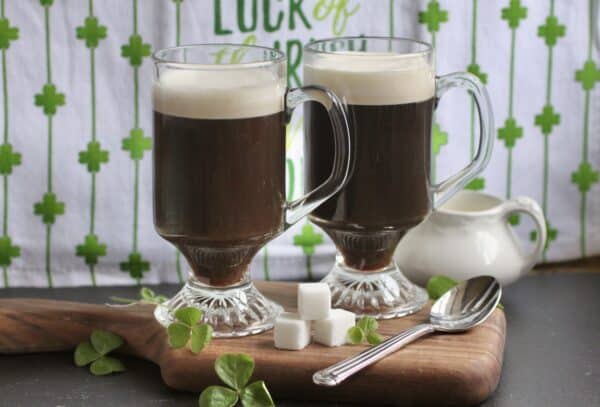
My favorite way of eating soda scones is the traditional way: frying them. It’s usually done in the same pan after cooking some bacon (YUM), just like I do with potato scones. This doesn’t necessarily have to be served before 9 am–I mean, who doesn’t have breakfast for dinner now and then?
A few days ago, a friend (who is originally from Scotland) gave me a book to borrow, called Maw Broon’s Cookbook. I LOVE this book! Children in Scotland (including me) used to receive a comic/cartoon book at Christmas called “Oor Wullie” or “The Broons.” Maw Broon (Mother Brown) was the matriarch of “The Broons” (The Browns), and she and Paw had 8 children.
Try Irish rarebit for an easy lunch.
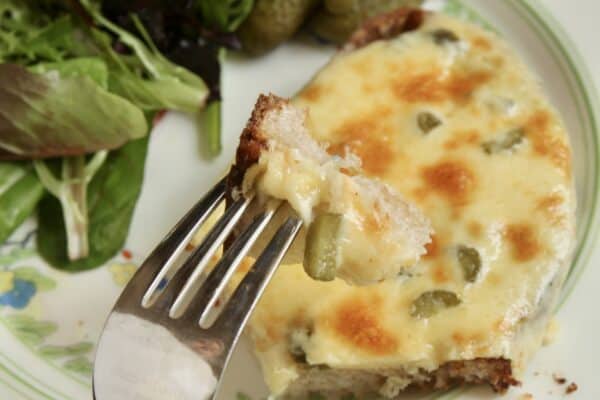
This cookbook is a representation of her supposed actual cookbook, complete with tape, marks, tea stains, handwritten recipes and notes and scribbles and drawings by her “weans” (children).
After perusing the book, I decided to try the Scottish soda scone recipe. Super simple, very quick to make, and almost perfect (I’ve made a few changes–sorry, Maw, noo (now) they’re pehrrrfect!)
How to Make Irish Soda Bread Scones
(Scottish White Bannocks)
adapted from Maw Broon’s Cookbook makes 4 large scones (serves 6-8)
FULL PRINTABLE RECIPE BELOW
Ingredients
- flour
- baking soda
- cream of tartar
- salt
- buttermilk
Directions
Sift all the dry ingredients together into a mixing bowl, holding the sieve high above the bowl to get as much air into the mixture as possible.
Pour in the buttermilk.
Then mix to a fairly soft dough, first with a spatula, then with your hands. Dough will be a bit sticky, but don’t overwork it, or the scones won’t turn out light.
Roll out onto a floured board and form into a round shape about 1/2″ thick.
Cut into quarters.
Cook the Irish soda bread scones on a hot griddle or non-stick pan on high, for about 5 minutes, then turn, lower the heat and continue to cook for another 5 minutes.
These turned out very large, so you can make half the recipe, or make 8 Scottish bannocks with the full recipe, too, if you prefer a smaller size.
You can also cook the entire dough as a whole, just scoring it into quarters first.
Remove from pan and cool slightly before cutting in half (horizontally;) using a fork gives a better texture.
Serve as desired, as part of a Scottish or Irish breakfast, or with afternoon tea, or as a snack, especially for St. Patrick’s Day.
This is another stove top scone recipe you may enjoy, cream girdle scones!
Or my friend Nancy’s Irish Guinness beer bread
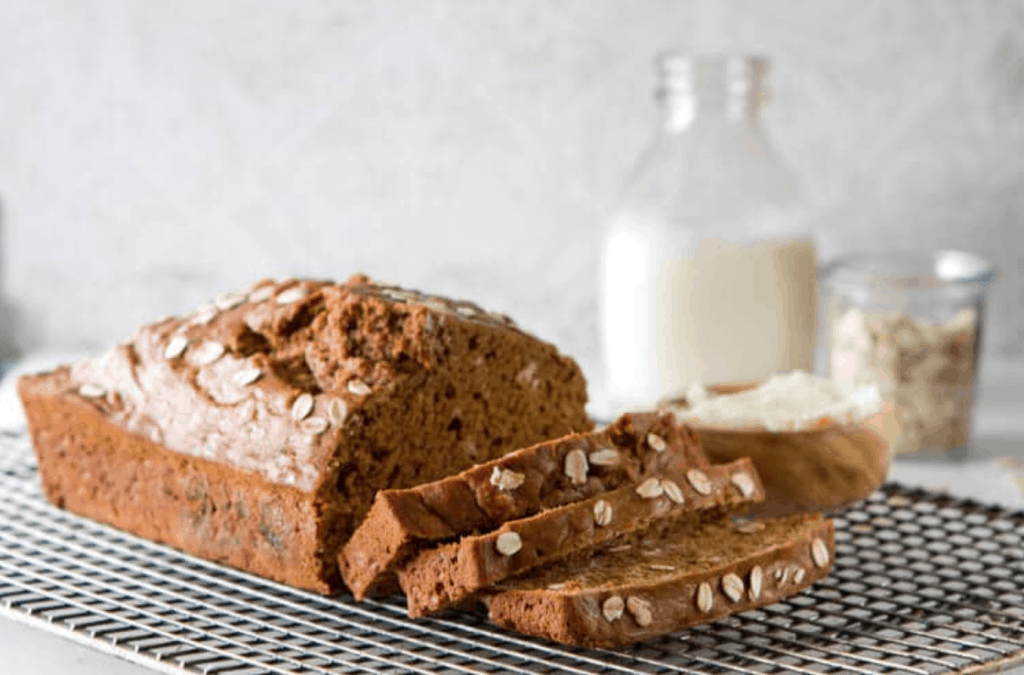
Don’t miss another travel or recipe post; subscribe to my free subscription below!
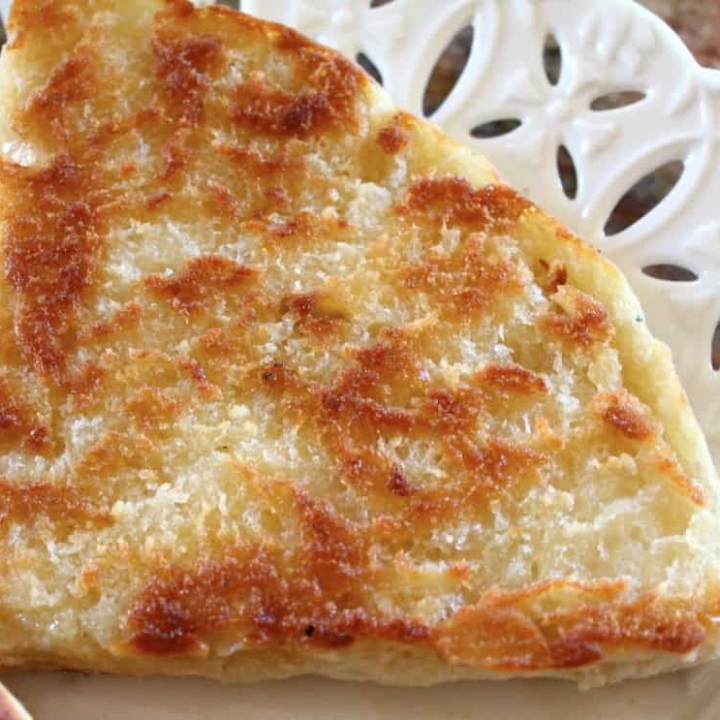
Irish Soda Bread Scones (Scottish White Bannocks)
A classic Scottish and Irish scone recipe.
Ingredients
- 1 lb (3 1/2 cups) flour
- 3/4 tsp baking soda
- 3/4 tsp cream of tartar
- 1 tsp salt
- 12 oz buttermilk
Instructions
- Sift all the dry ingredients together into a mixing bowl, holding the sieve high above the bowl to get as much air into the mixture as possible.
- Pour in the buttermilk, then mix to a fairly soft dough, first with a spatula, then with your hands. Dough will be a bit sticky, but don't overwork it, or the scones won't turn out light.
- Roll out onto a floured board and form into a round shape about 1/2" thick. Cut into quarters.
- Cook on a hot griddle or non-stick pan on high, for about 5 minutes, then turn, lower the heat and continue to cook for another 5 minutes. (These turned out very large, so you can make half the recipe, or make 8 scones with the full recipe too if you prefer a smaller size.)
- You can also cook the entire dough as a whole, just scoring it into quarters first.
- Remove from pan and cool slightly before cutting in half (horizontally;) using a fork gives a better texture. Serve as desired.
Notes
These are the same thing, but with different names.
Nutrition Information:
Yield: 4 Serving Size: 1/2Amount Per Serving: Calories: 100Total Fat: 1gSaturated Fat: 1gTrans Fat: 0gUnsaturated Fat: 0gCholesterol: 4mgSodium: 992mgCarbohydrates: 5gFiber: 0gSugar: 4gProtein: 3g
Nutrition information is only estimated.
Christina’s Cucina is a participant in the Amazon Services LLC Associates Program, an affiliate advertising program designed to provide a means for sites to earn advertising fees by advertising and linking to Amazon.com.
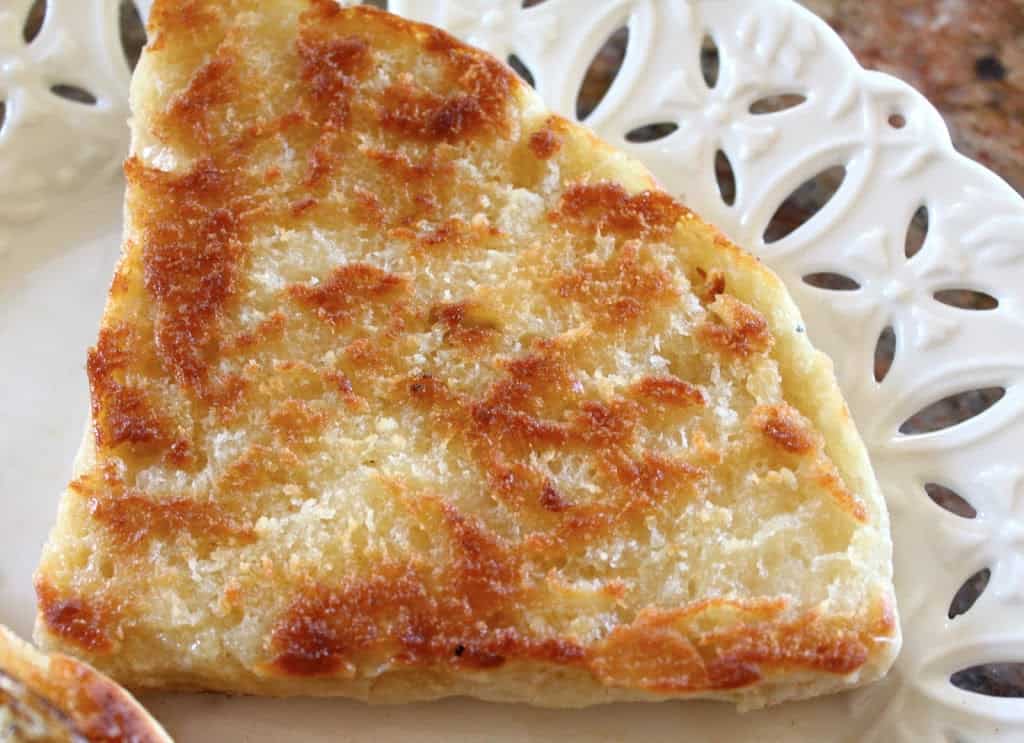
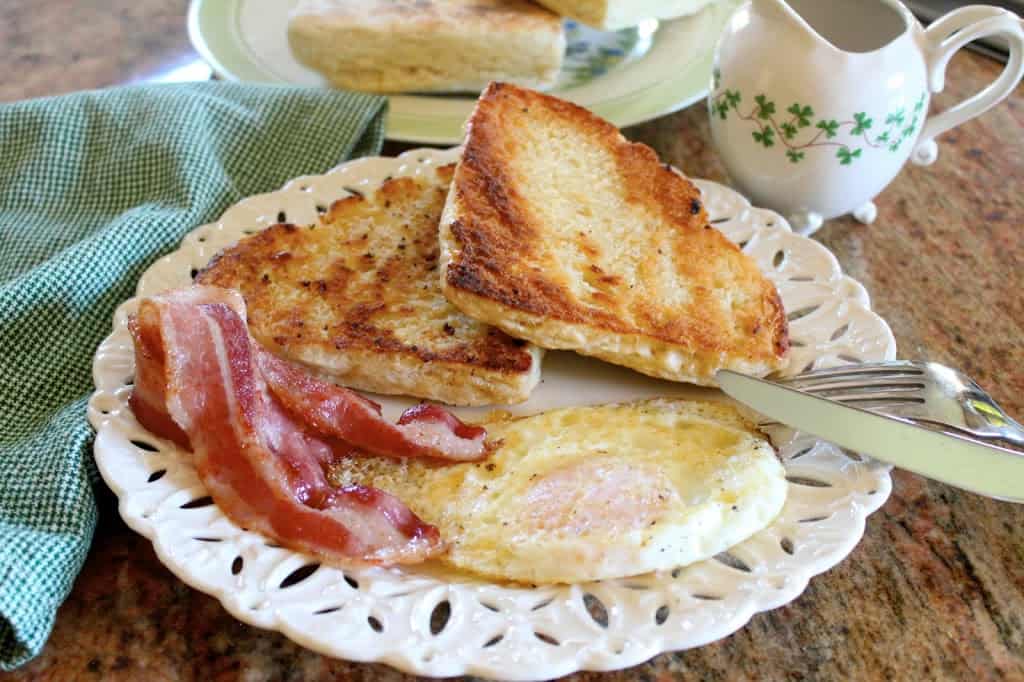
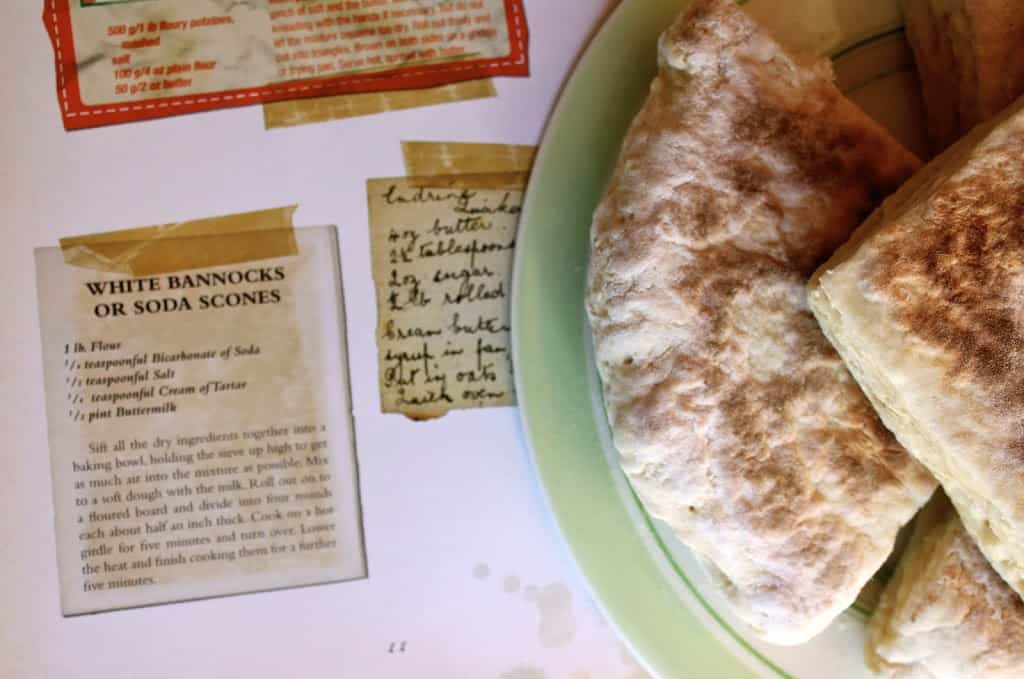
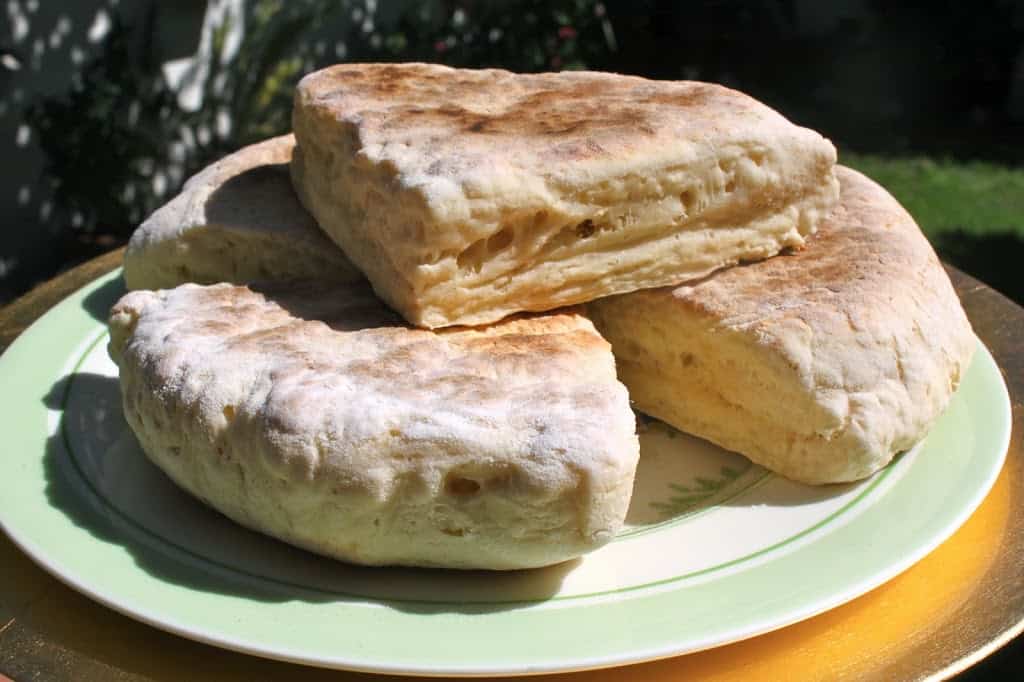
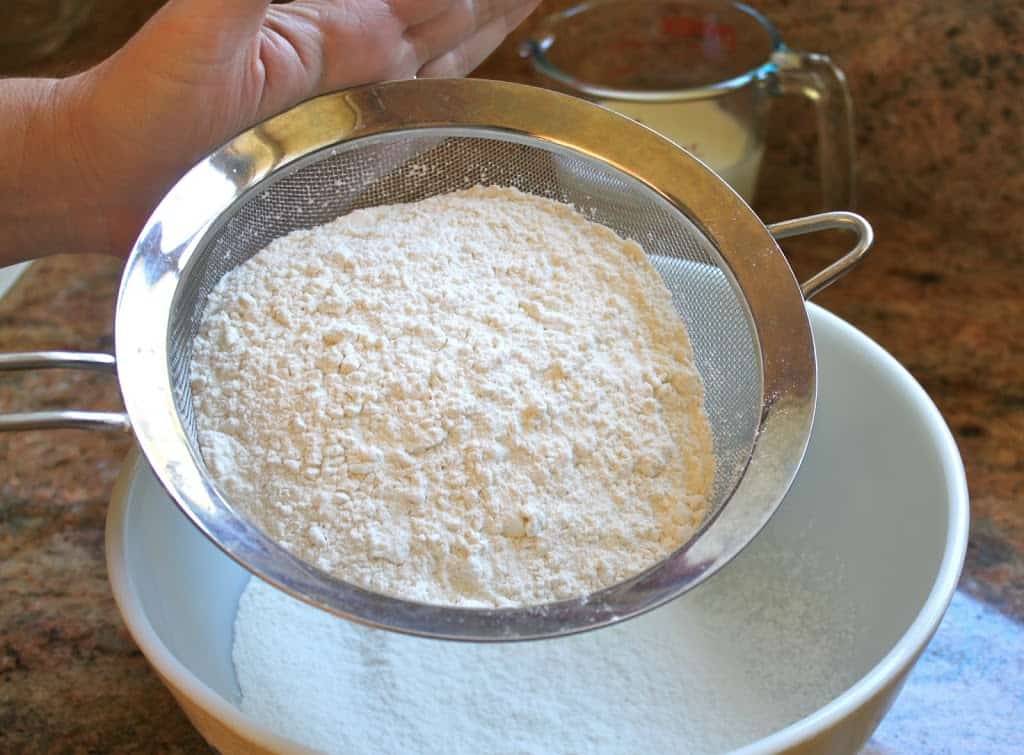
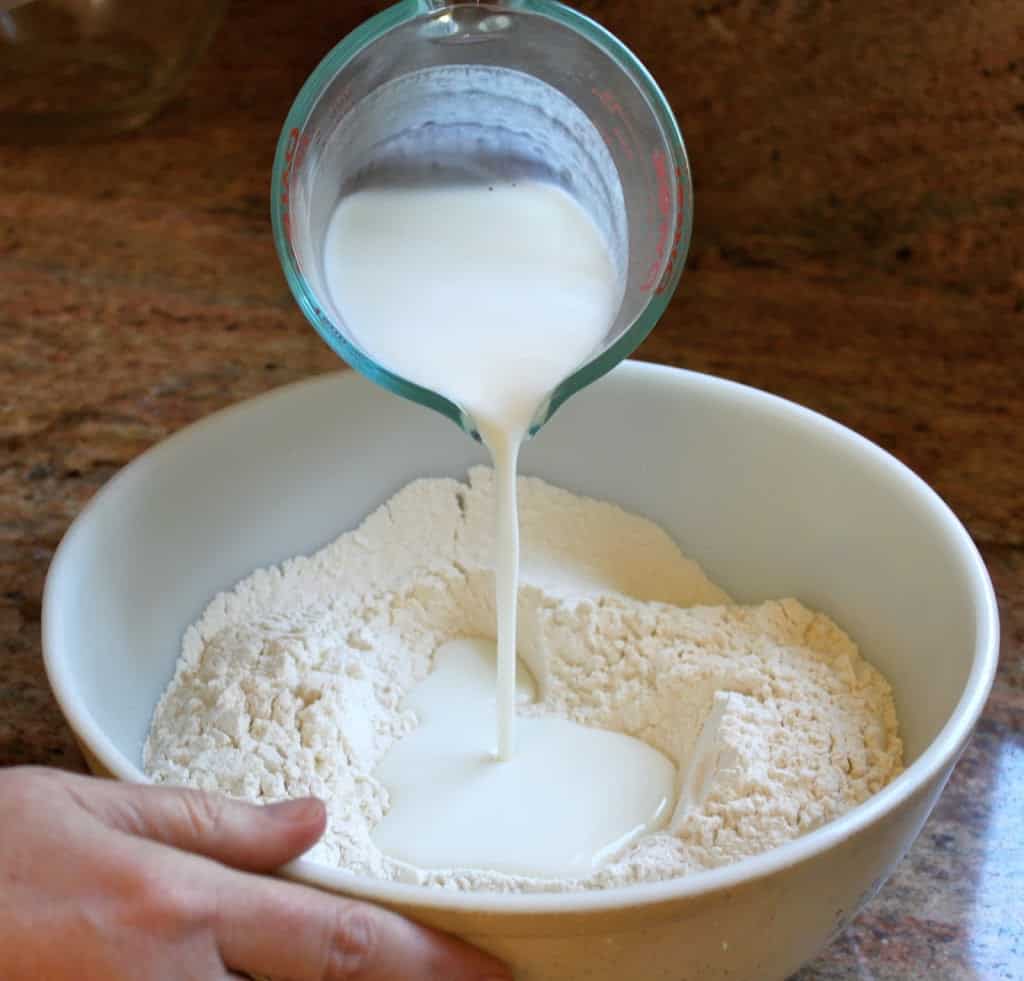
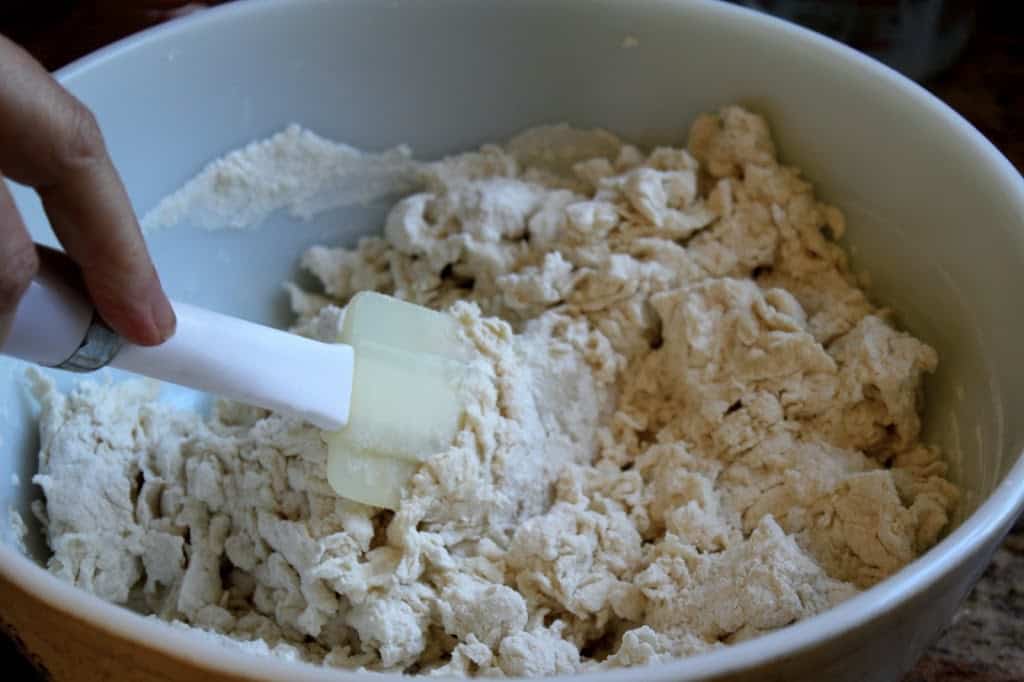

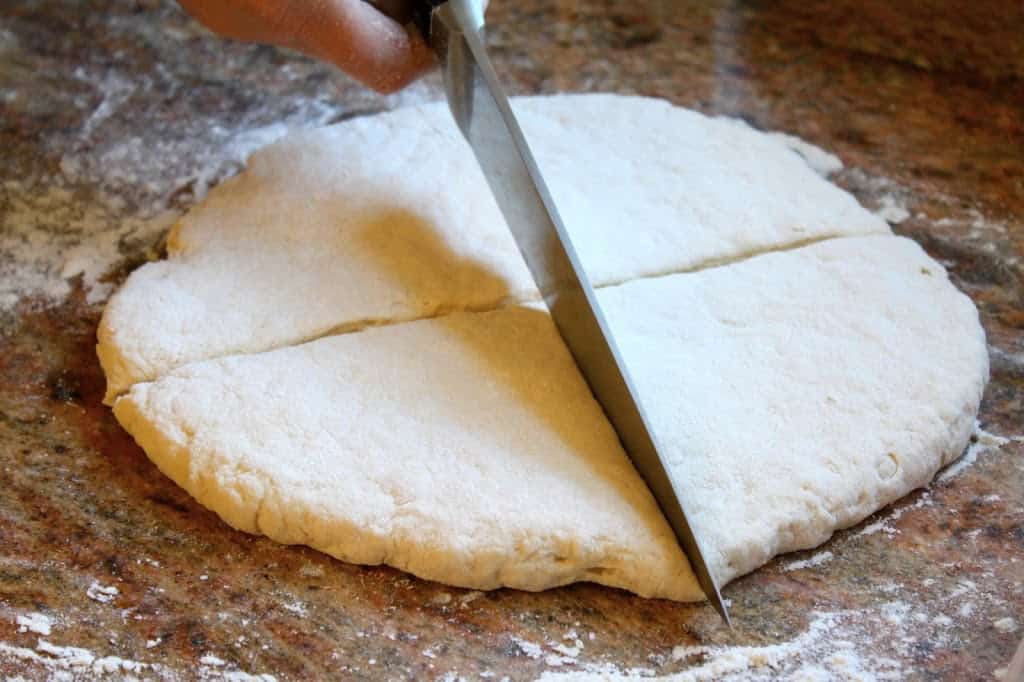
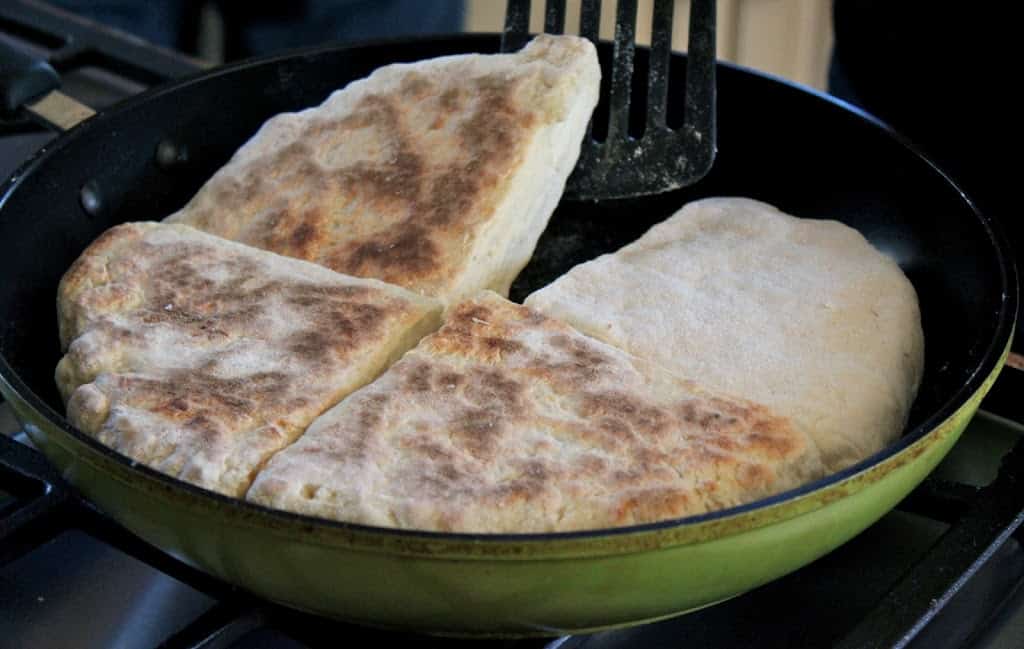
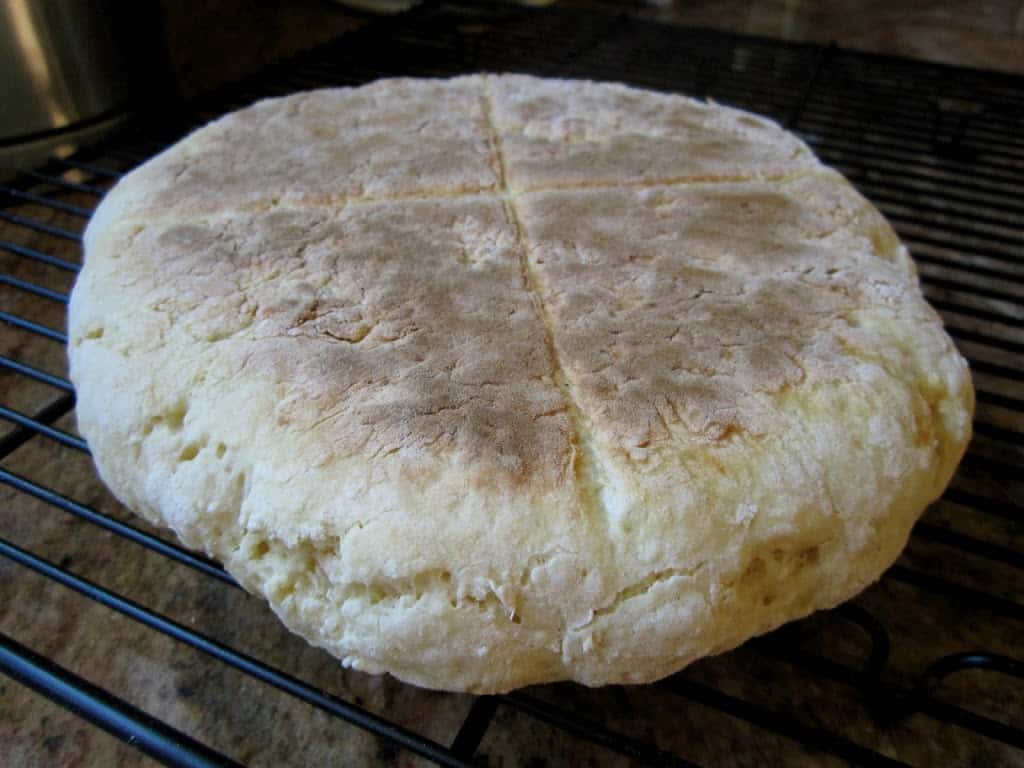

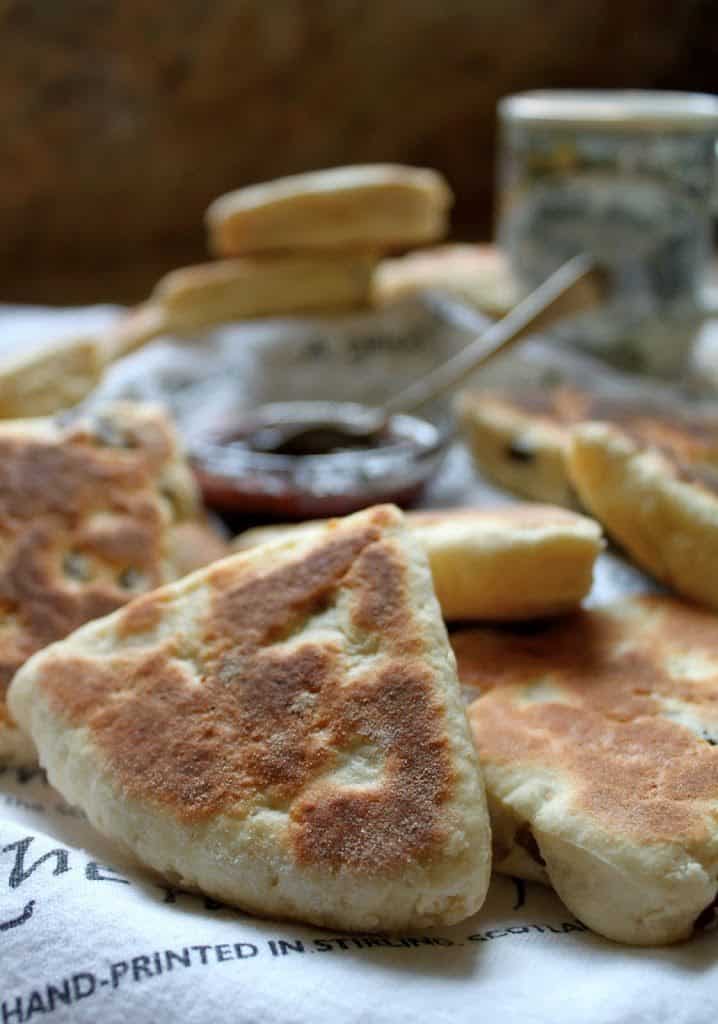
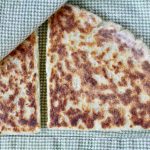
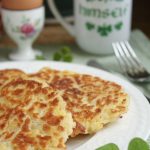
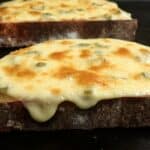

[…] Day because this dish and St Patrick and I all have something in common: we’re Scottish-Italian! You see, St. Patrick was born in what is now Scotland, to Roman parents (like […]
“Maw Broons Cookbook” I fondly remember the Broons in the Sunday Post from our holidays in the highlands of Scotland (Kyle of Lochalsh) at our grandparents when I was a kid. I will try this recipe in memory of those days and remember the smell of a peat fire in the living room!
Are the Broons still going?
Hello Christina, sorry to disagree on the st patrick saga, there’s been a lot of agrees and disagreements over the years of the original home of st patrick, some even claim he was French as Patrick being a French name.ive always been led to believe he was from the Welsh borders,I,e Shropshire,Hertfordshire.and he was in cardigan bay and is boat swept to Ireland in gales you say he was of roman heritage don’t think there was many Romans’ in what is now Scotland.different views that’s what makes the world around.be a bit boring if we all agreed on things.christina those scones look like I’ve got to have some I had some in Dunoon a few years back on holiday there,thanks Christian.
Of course we can agree to disagree, but so you know I just didn’t pull the information out of thin air, here are some facts. Some sources say St Patrick was born in Britain, which doesn’t distinguish between Scotland and the the other countries, but I have no idea where you heard the Welsh story. (Btw, Hertfordshire is nowhere near Wales.) The Romans went all the way up to Scotland, but this is history, not my opinion. This link is actually from WalesOnline. :) 1. St Patrick was born in Scotland 2. He was born to Roman parents. :)
Hi Christina ,sorry should have read Herefordshire,the welsh story is in the history book named the early British settlers, part of the encyclopaedia brittainca, but if you say he was a Scot he was a Scot.catch you later Christina.
Ah, okay! But no one really knows, do they? I just have to uphold my argument, simply because I’m Scottish-Italian! haha! All in good fun, Micky. Have a good week! :)
[…] Irish or Scottish Soda Scones (White Bannocks) with Buttermilk […]
[…] mean currant scones, or orange cranberry scones. You could make girdle scones, or potato scones or soda scones, for […]
Hi Christina. I just found your site yesterday and made the whole orange cake for Easter. Can’t wait to try some more of your recipes. My dad was a redhead until it started going white! It seems likely that our family came from Scotland in the 1600’s and settled in Donegal. But we were all taught in school that St. Paddy was Welsh or possibly French. I never heard of him being Scottish before! These scones are very like the ones my Donegal granny used to have ready for us when we went up to her on holiday. They are next on my list to make!
Awesome, Fiona! So glad you found my site! Yes, St Patrick was born in what is now Scotland and his parents were Roman :) I am sure you’ll love these scones; let me know how they turn out for you! Happy Easter! (Did you sign up for my free email subscription?) CC
[…] Irish Soda Scones […]
Howdy from Wyoming!
Because you use baking soda, would you use regular flour or self-rising flour? Also, if you use a griddle or cast-iron pan, I’m assuming you’d grease it with oil if you’re not frying in bacon grease ;o) Apologies if I’ve missed instructions for these.s
Thanks as always for your lovely posts and blog posts through which I live vicariously!
MoJo
You’re amazing! Love you to pieces!
Hi Mary Jo, sorry it’s not clear. To answer both questions, use all-purpose flour (self-rising already has the rising agent in it, so it would be too much). And no, there’s nothing in the griddle when you first cook them. After they’re made, THEN you want to fry them in bacon fat or whatever you like (split them in half as shown in the photo). Hope this helps and thank you for your lovely comments! :) CC